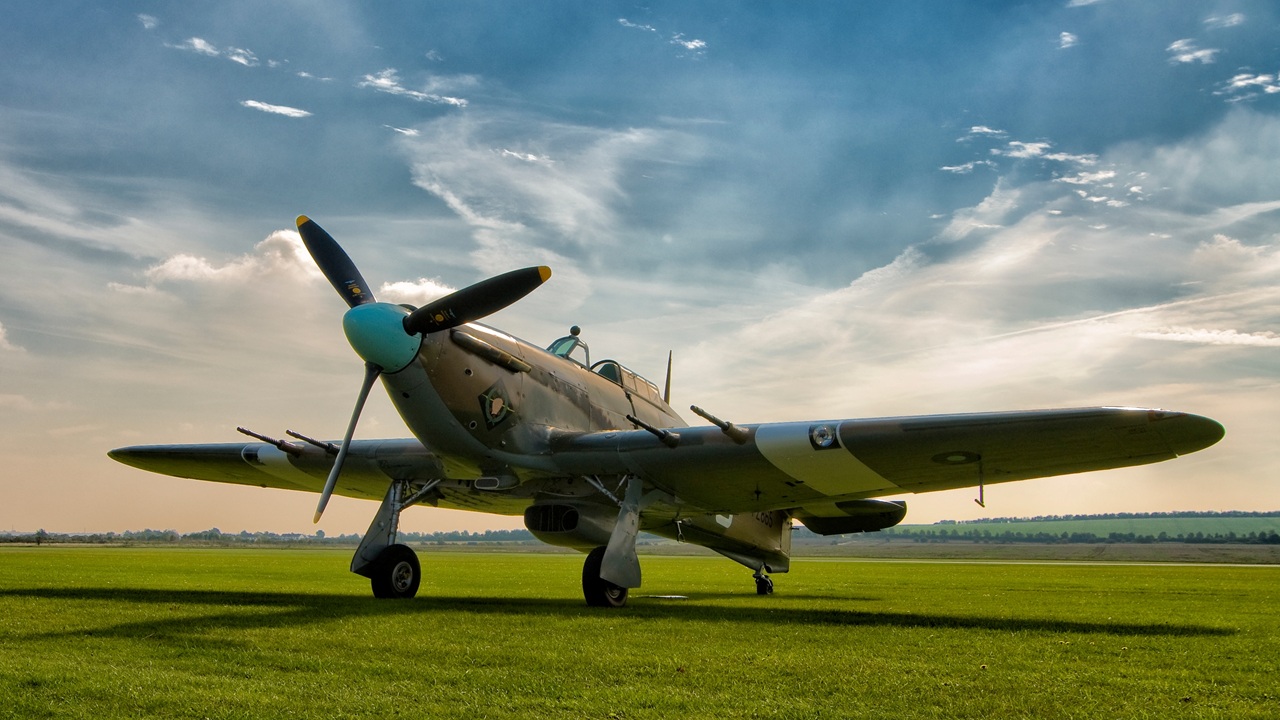
How the Hawker Hurricane Saved Britain During World War II
The Hawker Hurricane was not as attractive or streamlined as the Spitfire, and it failed to capture the public’s respect in the same way. But the Hurricane was responsible for nearly 60 percent of the Luftwaffe’s losses during the Battle of Britain.
The Hawker Hurricane has never quite gotten the credit it is owed.
The most prominent air battle of all time was the Battle of Britain, in which the Royal Air Force staved off the Luftwaffe’s attempts to gain air superiority over the British Isle, for the purpose of launching an amphibious invasion and forcing British capitulation. Had the Luftwaffe won the Battle of Britain, the British likely would have fallen—precluding the ability of the Americans to use Britain as a staging ground for their own invasion, D-Day, and forever changing the course of history. “Never in the field of human conflict was so much owed by so many to so few,” said British Prime Minister Winston Churchill of the RAF pilots who held the Luftwaffe at bay.
The British efforts, and the British victory, have long since been associated with the Supermarine Spitfire, a gorgeous and highly maneuverable air superiority fighter. But the Spitfire’s fond remembrance has obscured the feats of another aircraft, which statistically did more to win the Battle of Britain than the Spitfire—the Hawker Hurricane.
The Spitfire Was the RAF’s Showhorse—but the Hurricane Was Its Workhorse
The Hawker Hurricane was not as attractive or streamlined as the Spitfire, and it failed to capture the public’s respect in the same way. But the Hurricane was responsible for nearly 60 percent of the Luftwaffe’s losses during the Battle of Britain. What’s more, the plane fought in all the major theaters of the Second World War.
Typically, during the Battle of Britain, the Spitfires were tasked with intercepting German fighters, while the Hurricanes were left to deal with the German bombers. One reason the Hurricane was tasked with the bombers was because it was slower than both the Spitfire and the Luftwaffe’s Messerschmitt Bf 109E. Indeed, the Hurricane, with its thicker wing profiles, had slower acceleration than its contemporaries. Yet these slower speeds and thicker wings gave the Hurricane a critical advantage: in a dogfight, it could out-turn both the Spitfire and the Bf 109. In short, the Hurricane was more than capable of engaging and defeating the Bf 109; relying upon its superior maneuverability, its pilot would turn into attacks, or execute a corkscrew dive to evade the Bf 109.
The Hurricane had another key advantage: it was simply a very rugged aircraft. Of course, the aircraft was quite dangerous if it ever caught fire—its frame was wooden. And the gravity fuel tank was situated directly in front of the instrument panel, meaning very little separated the pilot from his fuel source. Indeed, as the Battle of Britain progressed, many Hurricane pilots were badly burned when their fuel ignited and burnt through the instrument panel.
The Hurricane’s Long Service Outside Britain
Beyond the Battle of Britain, the Hurricane’s contributions to the Allied war efforts were immense. Operated around the globe in each theater of the Second World War, the Hurricane made an indelible mark with the RAF and with export customers, including Australia, Poland, Turkey, South Africa, Soviet Union, and Yugoslavia.
Today, of the nearly 15,000 Hurricanes produced, only twelve are still airworthy. Fortunately, non-airworthy Hurricanes are still on display in museums around the world, offering an insight into the machines that helped to preserve the Allied war effort.
About the Author: Harrison Kass
Harrison Kass is a senior defense and national security writer with over 1,000 total pieces on issues involving global affairs. An attorney, pilot, guitarist, and minor pro hockey player, Harrison joined the US Air Force as a Pilot Trainee but was medically discharged. Harrison holds a BA from Lake Forest College, a JD from the University of Oregon, and an MA from New York University. Harrison listens to Dokken.
Image: Shutterstock / FlyingRabbit.